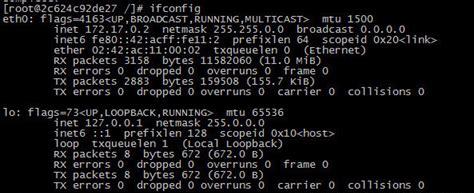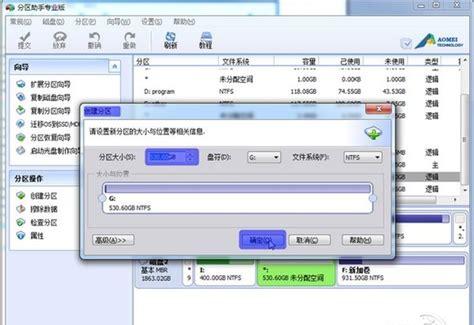http://www.cnblogs.com/peida/archive/2013/02/27/2934525.html
许多windows非常熟悉ipconfig命令行工具,它被用来获取网络接口配置信息并对此进行修改。Linux系统拥有一个类似的工具,也就是ifconfig(interfacesconfig)。

通常需要以root身份登录或使用sudo以便在Linux机器上使用ifconfig工具。依赖于ifconfig命令中使用一些选项属性,ifconfig工具不仅可以被用来简单地获取网络接口配置信息,还可以修改这些配置。
1.命令格式:
ifconfig[网络设备][参数]
2.命令功能:
ifconfig命令用来查看和配置网络设备。当网络环境发生改变时可通过此命令对网络进行相应的配置。
3.命令参数:
up启动指定网络设备/网卡。
down关闭指定网络设备/网卡。该参数可以有效地阻止通过指定接口的IP信息流,如果想永久地关闭一个接口,我们还需要从核心路由表中将该接口的路由信息全部删除。
arp设置指定网卡是否支持ARP协议。
-promisc设置是否支持网卡的promiscuous模式,如果选择此参数,网卡将接收网络中发给它所有的数据包
-allmulti设置是否支持多播模式,如果选择此参数,网卡将接收网络中所有的多播数据包
-a显示全部接口信息
-s显示摘要信息(类似于netstat-i)
mtu<字节数>设置网卡的最大传输单元(bytes)
netmask<子网掩码>设置网卡的子网掩码。掩码可以是有前缀0x的32位十六进制数,也可以是用点分开的4个十进制数。如果不打算将网络分成子网,可以不管这一选项;如果要使用子网,那么请记住,网络中每一个系统必须有相同子网掩码。
tunel建立隧道
multicast为网卡设置组播标志
txqueuelen<长度>为网卡设置传输列队的长度
4.使用实例:
实例1:显示网络设备信息(激活状态的)
命令:
ifconfig
输出:
[root@localhost~]#ifconfigeth0Linkencap:EthernetHWaddr00:50:56:BF:26:20inetaddr:192.168.120.204Bcast:192.168.120.255Mask:255.255.255.0UPBROADCASTRUNNINGMULTICASTMTU:1500Metric:1RXpackets:8700857errors:0dropped:0overruns:0frame:0TXpackets:31533errors:0dropped:0overruns:0carrier:0collisions:0txqueuelen:1000RXbytes:596390239(568.7MiB)TXbytes:2886956(2.7MiB)loLinkencap:LocalLoopbackinetaddr:127.0.0.1Mask:255.0.0.0UPLOOPBACKRUNNINGMTU:16436Metric:1RXpackets:68errors:0dropped:0overruns:0frame:0TXpackets:68errors:0dropped:0overruns:0carrier:0collisions:0txqueuelen:0RXbytes:2856(2.7KiB)TXbytes:2856(2.7KiB)
说明:
第三行:UP(代表网卡开启状态)RUNNING(代表网卡的网线被接上)MULTICAST(支持组播)MTU:1500(最大传输单元):1500字节
第四、五行:接收、发送数据包情况统计
第七行:接收、发送数据字节数统计信息。
实例2:启动关闭指定网卡
命令:
ifconfigeth0up
ifconfigeth0down
输出:
说明:
ifconfigeth0up为启动网卡eth0;ifconfigeth0down为关闭网卡eth0。ssh登陆linux服务器操作要小心,关闭了就不能开启了,除非你有多网卡。
命令:
ifconfigeth0add33ffe:3240:800:1005::2/64
ifconfigeth0del33ffe:3240:800:1005::2/64
输出:
说明:
练习的时候,ssh登陆linux服务器操作要小心,关闭了就不能开启了,除非你有多网卡。
命令:
ifconfigeth0hwether00:AA:BB:CC:DD:EE
输出:
命令:
输出:
[root@localhost~]#ifconfigeth0192.168.120.56[root@localhost~]#ifconfigeth0192.168.120.56netmask255.255.255.0[root@localhost~]#ifconfigeth0192.168.120.56netmask255.255.255.0broadcast192.168.120.255
说明:
ifconfigeth0192.168.120.56
给eth0网卡配置IP地:192.168.120.56
ifconfigeth0192.168.120.56netmask255.255.255.0
ifconfigeth0192.168.120.56netmask255.255.255.0broadcast192.168.120.255
实例6:启用和关闭ARP协议
命令:
ifconfigeth0arp
ifconfigeth0-arp
输出:
[root@localhost~]#ifconfigeth0arp[root@localhost~]#ifconfigeth0-arp
说明:
ifconfigeth0arp开启网卡eth0的arp协议;
ifconfigeth0-arp关闭网卡eth0的arp协议;
实例7:设置最大传输单元
命令:
ifconfigeth0mtu1500
输出:
[root@localhost~]#ifconfigeth0mtu1480[root@localhost~]#ifconfigeth0Linkencap:EthernetHWaddr00:50:56:BF:26:1Finetaddr:192.168.120.203Bcast:192.168.120.255Mask:255.255.255.0UPBROADCASTRUNNINGMULTICASTMTU:1480Metric:1RXpackets:8712395errors:0dropped:0overruns:0frame:0TXpackets:36631errors:0dropped:0overruns:0carrier:0collisions:0txqueuelen:1000RXbytes:597062089(569.4MiB)TXbytes:2643973(2.5MiB)loLinkencap:LocalLoopbackinetaddr:127.0.0.1Mask:255.0.0.0UPLOOPBACKRUNNINGMTU:16436Metric:1RXpackets:9973errors:0dropped:0overruns:0frame:0TXpackets:9973errors:0dropped:0overruns:0carrier:0collisions:0txqueuelen:0RXbytes:518096(505.9KiB)TXbytes:518096(505.9KiB)[root@localhost~]#ifconfigeth0mtu1500[root@localhost~]#ifconfigeth0Linkencap:EthernetHWaddr00:50:56:BF:26:1Finetaddr:192.168.120.203Bcast:192.168.120.255Mask:255.255.255.0UPBROADCASTRUNNINGMULTICASTMTU:1500Metric:1RXpackets:8712548errors:0dropped:0overruns:0frame:0TXpackets:36685errors:0dropped:0overruns:0carrier:0collisions:0txqueuelen:1000RXbytes:597072333(569.4MiB)TXbytes:2650581(2.5MiB)loLinkencap:LocalLoopbackinetaddr:127.0.0.1Mask:255.0.0.0UPLOOPBACKRUNNINGMTU:16436Metric:1RXpackets:9973errors:0dropped:0overruns:0frame:0TXpackets:9973errors:0dropped:0overruns:0carrier:0collisions:0txqueuelen:0RXbytes:518096(505.9KiB)TXbytes:518096(505.9KiB)[root@localhost~]#
说明:
设置能通过的最大数据包大小为1500bytes
备注:用ifconfig命令配置的网卡信息,在网卡重启后机器重启后,配置就不存在。要想将上述的配置信息永远的存的电脑里,那就要修改网卡的配置文件了。
本系列文章:
每天一个 Linux 命令(1):ls命令每天一个 Linux 命令(2):cd命令每天一个 Linux 命令(3):pwd命令每天一个 Linux 命令(4):mkdir命令每天一个 Linux 命令(5):rm 命令
每天一个 Linux 命令(6):rmdir 命令
每天一个 Linux 命令(7):mv命令
每天一个 Linux 命令(8):cp 命令每天一个 Linux 命令(9):touch 命令
每天一个 Linux 命令(10):cat 命令
每天一个 Linux 命令(11):nl命令每天一个 Linux 命令(12):more命令每天一个 Linux 命令(13):less 命令每天一个 Linux 命令(14):head 命令每天一个 Linux 命令(15):tail 命令每天一个 Linux 命令(16):which命令每天一个 Linux 命令(17):whereis 命令每天一个 Linux 命令(18):locate 命令每天一个 Linux 命令(19):find 命令概览每天一个 Linux 命令(20):find命令之exec每天一个 Linux 命令(21):find命令之xargs
每天一个 Linux 命令(22):find 命令的参数详解
每天一个 Linux 命令(23):Linux 目录结构
每天一个 Linux 命令(24):Linux 文件类型与扩展名
每天一个 Linux 命令(25):Linux 文件属性详解每天一个 Linux 命令(26):用 SecureCRT 来上传和下载文件每天一个 Linux 命令(27):chmod 命令每天一个 Linux 命令(28):tar 命令每天一个 Linux 命令(29):chgrp命令每天一个 Linux 命令(30):chown命令每天一个 Linux 命令(31):/etc/group文件详解每天一个 Linux 命令(32):gzip命令每天一个 Linux 命令(33):df 命令每天一个 Linux 命令(34):du 命令每天一个 Linux 命令(35):ln 命令每天一个 Linux 命令(36):diff 命令
每天一个 Linux 命令(37):date命令
每天一个 Linux 命令(38):cal 命令每天一个 Linux 命令(39):grep 命令每天一个 Linux 命令(40):wc命令
每天一个 Linux 命令(41):ps命令
每天一个 Linux 命令(42):kill命令
每天一个 Linux 命令(43):killall 命令
每天一个 Linux 命令(44):top命令
每天一个 Linux 命令(45):free 命令
每天一个 Linux 命令(46):vmstat命令
每天一个 Linux 命令(47):iostat命令
每天一个 Linux 命令(48):watch命令
每天一个 Linux 命令(49):at命令
每天一个 Linux 命令(50):crontab命令
每天一个 Linux 命令(51):lsof命令
看完本文有收获?请分享给更多人










